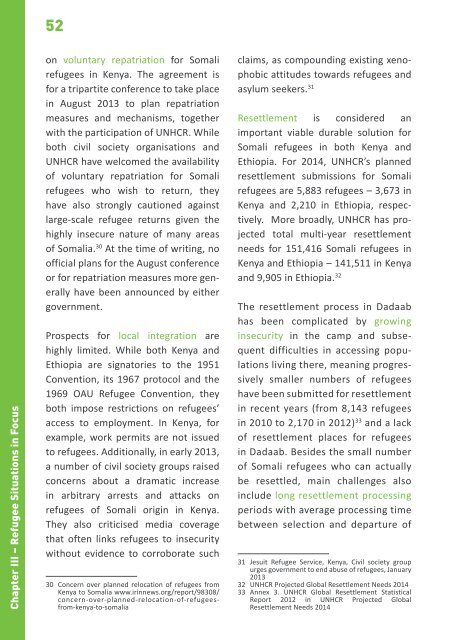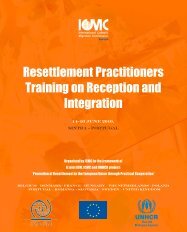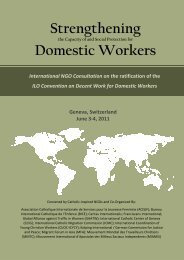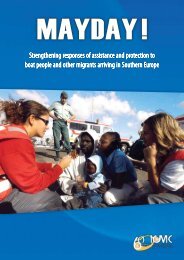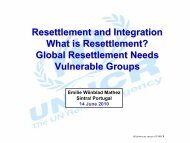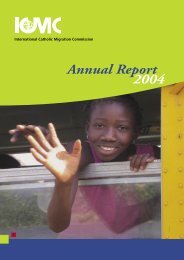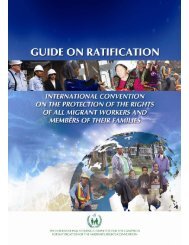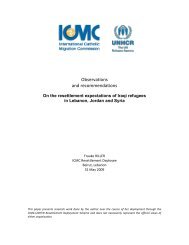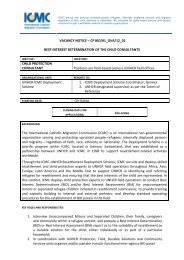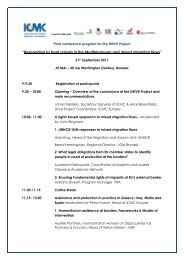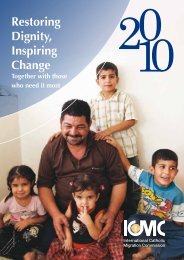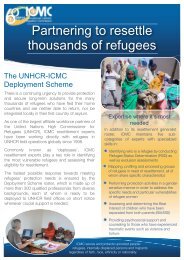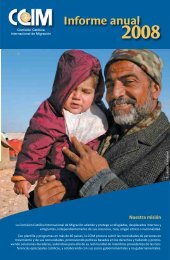ICMCEUROPE WelcometoEurope.pdf (5.89 MB)
ICMCEUROPE WelcometoEurope.pdf (5.89 MB)
ICMCEUROPE WelcometoEurope.pdf (5.89 MB)
Create successful ePaper yourself
Turn your PDF publications into a flip-book with our unique Google optimized e-Paper software.
52<br />
Chapter III – Refugee Situations in Focus<br />
on voluntary repatriation for Somali<br />
refugees in Kenya. The agreement is<br />
for a tripartite conference to take place<br />
in August 2013 to plan repatriation<br />
measures and mechanisms, together<br />
with the participation of UNHCR. While<br />
both civil society organisations and<br />
UNHCR have welcomed the availability<br />
of voluntary repatriation for Somali<br />
refugees who wish to return, they<br />
have also strongly cautioned against<br />
large-scale refugee returns given the<br />
highly insecure nature of many areas<br />
of Somalia. 30 At the time of writing, no<br />
official plans for the August conference<br />
or for repatriation measures more generally<br />
have been announced by either<br />
government.<br />
Prospects for local integration are<br />
highly limited. While both Kenya and<br />
Ethiopia are signatories to the 1951<br />
Convention, its 1967 protocol and the<br />
1969 OAU Refugee Convention, they<br />
both impose restrictions on refugees’<br />
access to employment. In Kenya, for<br />
example, work permits are not issued<br />
to refugees. Additionally, in early 2013,<br />
a number of civil society groups raised<br />
concerns about a dramatic increase<br />
in arbitrary arrests and attacks on<br />
refugees of Somali origin in Kenya.<br />
They also criticised media coverage<br />
that often links refugees to insecurity<br />
without evidence to corroborate such<br />
30 Concern over planned relocation of refugees from<br />
Kenya to Somalia www.irinnews.org/report/98308/<br />
concern-over-planned-relocation-of-refugeesfrom-kenya-to-somalia<br />
claims, as compounding existing xenophobic<br />
attitudes towards refugees and<br />
asylum seekers. 31<br />
Resettlement is considered an<br />
important viable durable solution for<br />
Somali refugees in both Kenya and<br />
Ethiopia. For 2014, UNHCR’s planned<br />
resettlement submissions for Somali<br />
refugees are 5,883 refugees – 3,673 in<br />
Kenya and 2,210 in Ethiopia, respectively.<br />
More broadly, UNHCR has projected<br />
total multi-year resettlement<br />
needs for 151,416 Somali refugees in<br />
Kenya and Ethiopia – 141,511 in Kenya<br />
and 9,905 in Ethiopia. 32<br />
The resettlement process in Dadaab<br />
has been complicated by growing<br />
insecurity in the camp and subsequent<br />
difficulties in accessing populations<br />
living there, meaning progressively<br />
smaller numbers of refugees<br />
have been submitted for resettlement<br />
in recent years (from 8,143 refugees<br />
in 2010 to 2,170 in 2012) 33 and a lack<br />
of resettlement places for refugees<br />
in Dadaab. Besides the small number<br />
of Somali refugees who can actually<br />
be resettled, main challenges also<br />
include long resettlement processing<br />
periods with average processing time<br />
between selection and departure of<br />
31 Jesuit Refugee Service, Kenya, Civil society group<br />
urges government to end abuse of refugees, January<br />
2013<br />
32 UNHCR Projected Global Resettlement Needs 2014<br />
33 Annex 3. UNHCR Global Resettlement Statistical<br />
Report 2012 in UNHCR Projected Global<br />
Resettlement Needs 2014


